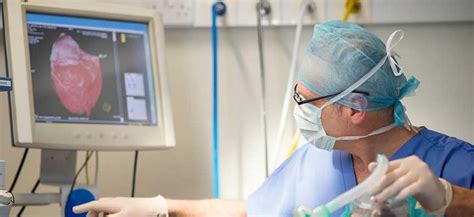Tissue Ablation: Understanding the Procedure
Tissue Ablation FAQ
What is ablation therapy?
"Ablation" is a general term that refers to the process of destroying, removing, or “reprogramming” abnormal tissue or a part of the body that isn’t functioning correctly. This is usually done by applying extreme heat (thermal ablation) or cold (cryoablation) to the affected area of the body.
What is cell ablation?
Also known as tissue ablation, cell ablation is a biotechnological tool for studying cell lineage. The process consists of selectively destroying or removing cells in an organism. For example, a laser beam or controllable gene promoter for a toxin gene can be used to destroy a selected amount of cells.
What is an example of an ablation procedure?
For example, a doctor might use an ablation procedure to destroy (ablate) a small amount of heart tissue that's causing abnormal heart rhythms or to treat tumors in the lung, breast, thyroid, liver or other areas of the body. Doctors trained in imaging (radiologists), heart specialists (cardiologists) and other specialists perform ablation therapy.
What is cardiac ablation & how does it work?
Cardiac ablation is used to treat arrhythmias (abnormal heart rhythms) by making tiny scars in heart tissues. These scars can help to stop abnormal electrical signals, normalize your heartbeat, and improve heart function.
What is a heart ablation & how does it work?
An ablation is a minimally invasive procedure performed to get rid of the extra electrical connection in your heart that causes your abnormal heart rhythm. It involves placing a special ablation catheter on the abnormal heart tissue and works by tissue heating / or super cooling to inactivate or cordon off the affected area.
What is catheter ablation & how does it work?
Ablation, also known as catheter ablation, is a treatment that aims to correct certain types of abnormal heart rhythms by blocking electrical pathways in the heart. It uses either heat (radiofrequency ablation) or freezing (cryoablation) on the area of your heart that’s causing the abnormal heart rhythm (or arrhythmia ).
Tissue Ablation References
If you want to know more about Tissue Ablation, consider exploring links below:
What Is Tissue Ablation
- https://www.health.com/ablation-8363097
- https://www.verywellhealth.com/ablation-therapy-7561719
- https://www.mayoclinic.org/tests-procedures/ablation-therapy/about/pac-20385072
- https://www.bhf.org.uk/informationsupport/treatments/ablation
- https://en.wikipedia.org/wiki/Cell_ablation
- https://www.webmd.com/heart-disease/atrial-fibrillation/ss/slideshow-ablation-what-to-know
- https://my.clevelandclinic.org/health/treatments/17801-ablation-therapy
- https://www.sciencedirect.com/topics/medicine-and-dentistry/tissue-ablation
Tissue Ablation Information
Explore Related Topics
What is the role of cryosurgery in treating prostate health problems?
Join the conversation about the use of cryosurgery as a potential treatment option for prostate health conditions and its benefits and limitations.
